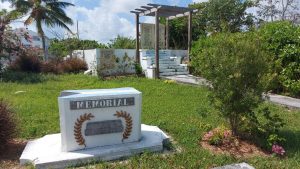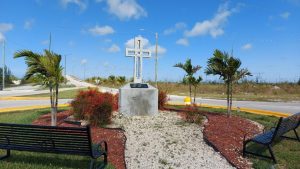May 15, 2023, by lzzre
Exploring the Effects of Hurricane Dorian on the Bahamas
Dr Bethany Jackson
Three and a half years ago, one of the most devastating Category 5 hurricanes to pass through the Caribbean made its home over the Bahamian islands of Abaco and Grand Bahama. The impact of this extraordinary hazard displaced communities, demolished homes, and devastated the landscape. Compounding the issues following the response to Dorian was the COVID-19 pandemic, which hit the islands only 6 months after the storm.
As part of a Templeton World Charity Foundation grant, we travelled to the Bahamas in April 2023 to explore the effects of Dorian (both at the time, and in the years since) and to explore the economic and social implications the hurricane placed upon communities within the country, particularly about working conditions.
Our time in the Bahamas was focused on the two most impacted by the storm – Abaco (which was hit on September 1 2019) and Grand Bahama (where the hurricane stayed in place on the 2 and 3 September 2019). Whilst both islands experienced Dorian, the experiences of those we spoke with on both islands and the recovery we witnessed varied.
On Abaco, there was a great sense of active recovery and redevelopment following Dorian, but this also came alongside an undertone of exclusion for some community members. This exclusion was particularly aimed at the Haitian migrant population who had experienced huge losses within the Mudd and Pigeon Peas region of the island, but these losses are not noted to the extent that one would assume; something we observed when we visited the memorial to those who were lost during the storm whilst on the island. Visiting the memorial was a particularly poignant moment as the memorial is housed upon the foundations of a home that was swept inland during the surge of water. The official number of lives lost during the storm is 70, however, speaking with those who worked in NGOs and experts in country during our trip some estimate that to be more like 2000 lives lost – with many of those originating from informal migrant communities based on Abaco.

Photo of the Hurricane Dorian memorial on the island of Abaco. The memorial is built on the remaining foundations of a home that was swept inland by the storm, having since been turned into a memorial garden.
We also spent several days on Grand Bahama, whose main city Freeport managed to avoid the brunt of the storm but there were still many stark impacts that could be seen. Most notably was our drive over the Sir Jack Hayward bridge were the true scale of the Dorian having stayed almost stationary over the island for two days could be seen. For as far as they eye could see, the trunks of pine trees – stripped of their leaves and now dead – could be seen toward the horizon. This clear natural devastation was shocking to see but did help to explain some of the satellite data analysis we had complete prior to our arrival in the Bahamas. Situated close to this bridge was the memorial for those who were missing or died on Grand Bahama and the location seemed fitting as the change beyond the bounds of Freeport into West Grand Bahama showed the scale of the hurricane the island faced.
The exploration of the islands also saw us located on New Providence in the capital Nassau for several days and this provided a great opportunity to connect with both community members, experts who responded to Hurricane Dorian, and fellow academics. We met with international colleagues from both the University of the West Indies (at their open campus in the Bahamas) – who kindly supported in us hosting a hackathon event which looked at applying satellite data to support hazard responses (you can find out about the winners here) – as well as staff from the University of the Bahamas. COVID-19 had caused several changes to our research plans for this project and finally getting to travel to the areas most impacted, and where the response was led from allowed a greater understanding of the local dynamics at play in the country, and what that means for the continued recovery of the nation beyond Hurricane Dorian.

Photo of the Hurricane Dorian memorial on the island of Grand Bahama located close to the Sir Jack Hayward Bridge in northern Freeport.
For many we spoke to, Dorian was a once-in-lifetime event that they simply hoped would not happen again. The question we came away with is what will happen if it does? Many expressed how the actions put in place by the government in the years since are likely not enough, and there are still clear barriers faced by communities in trying to rebuild – whether that be access to resources, or discrimination due to nationality. Whilst questions remain, what is clear is that all those in the Bahamas are resilient and are keen to ensure that improvements are made so communities are protected during Hurricane events.
We hope that our research findings can feed into this wider push to ensure working people in particular at protected in post-Hurricane events. As we explore the findings from our fieldwork we hope to generate not only tools to support humanitarian response in the immediate aftermath of storms, but also to ensure that there are more robust mechanisms in place to prevent losses of life and the potential for individuals to be exposed to risky working conditions.
No comments yet, fill out a comment to be the first

Leave a Reply